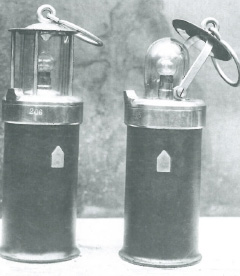Glossary
A
Active Mass
Material which undergoes the electrochemical reaction during charge and discharge processes. There are positive (Ni) and negative (Cd) active mass in a battery available.
Anode
Positively charged electrode. Absorption of electrons. Positive Pole.
B
Battery Calculator
A software tool provided for customer to calculate the correct size of the battery by insert the system parameter and load profile.
Battery Capacity
The battery capacity is the charge stored by a battery. The unit is Ah.
BESS
The Battery Energy Storage System (BESS) is a big battery including inverters and management systems to store electrical energy in form from chemical energy to supply back up power, uninterrupted power and power generation smoothing.
BMS
The Battery Management System (BMS) is a safety system to ensure a safe operation of the battery and can influence single cells.
Second Meaning can be:
The Battery Monitoring System (BMS) is a system to monitor the most important variables of a battery like voltage, current, temperature, electrolyte level on battery or single cell level.
Boost Charge
The Boost Charge is the charging operation to charge a fully or partly discharged battery back to higher level state of charge. The boost charge voltage for Ni-Cd Batteries is 1.55-1.70 Vpc for standard and 1.45-1.46 Vpc for lomain cells.
C
Cathode
Negatively charged electrode. Emission of electrons. Negative Pole.
Cell Container
Plastic or steel made cases containing the electrode stacks and electrolyte inside. Will be covered with cell lid.
Cell lid
Item which will be placed on the cell container to close the battery. Will be glued or sealed with the cell container. Possess 2 or more holes for the pole bolts.
Charge Factor
Ratio of charged energy and available capacity.
Charging Efficiency
The charging efficiency is the ratio between the energy consumed by the charging process and the energy saved by the battery.
E
Electrode
Electrodes are mean part of the cell. For pocket plate Ni-Cd cells they consist out of needle perforated metal strips including the active mass inside. There are two types of electrodes in a battery: a negative (Cd) and positive (Ni) electrode.
Electrode Stack
Bundle of alternating plus and minus electrodes with separator and pole bolts. Will be inserted in the cell container.
Electrolyte
In the electrolyte occurs the ion-exchanges between negative and positive electrode which are separated by separator. For Ni-Cd it is an alcaline potassium hydroxide solution with specific density and additives.
Energy Density
The energy density (or specific energy) is the amount of energy in a Battery compared to its weight or volume. The unit is Wh/kg (gravimetric energy density) or Wh/L (volumetric energy density).
F
Float Derating Effect
Effect occurs after 3 months of float charge and lead to higher available capacity during long term discharge rates (> 5h) and less available capacity during discharge with high rate due to higher voltage drop of the formed active mass species.
Float Charge
The float charge is the charging operation during the battery is not used to overcome self-discharge of the battery. The float charge for Ni-Cd Batteries is 1.40-1.42 Vpc for standard and lomain types.
H
HVAC
The Heating, Ventilation and Air Conditioning (HVAC) system ensures the best ambient condition for the battery at 20 °C to ensure longest lifetime and best performance of battery.
M
Memory Effect
A second discharge level of Ni-Cd cells caused by recrystallisation of the negative electrode. Contrary to popular belief, this effect is not an inherent property of Ni-Cd cells, but rather a result of their improper use.
N
Ni-Cd
Nickel-Cadmium, the abbreviation for the metals which will be used in Nickel Cadmium Batteries.
P
Pole Bolt
Metal item where the electrodes are connected. Pole bolts are the connection point of the cables or solid connectors to connect different cells with each other.
Power Density
The power density or specific power indicated the loading capability. The Unit is W/kg.
Prismatic Cells
Most typical form for vented Ni-Cd cells. Other forms can be cylindrical (sealed Ni-Cd cells) or pouch cells (Li Technology).
R
Recycling
Process to recover the material of old batteries or scrap into useful products. The plastic parts will undergo a pyrolysis treatment and all resulting metal rich materials will be used directly or smelted in an electric furnace to make iron and nickel alloys. Recycling efficiency of active materials in Ni-Cd is 99,995 %.




